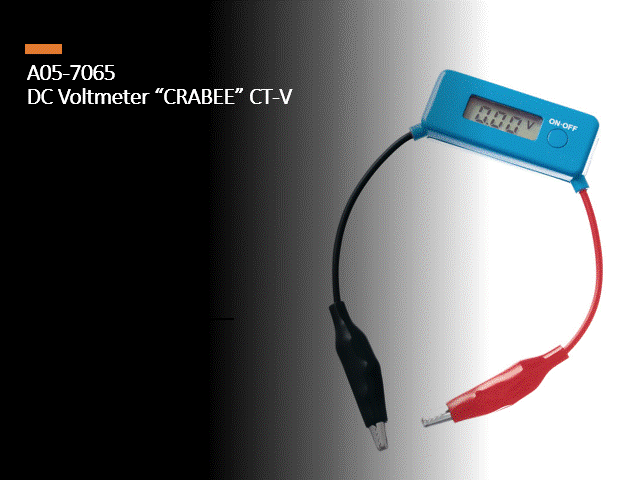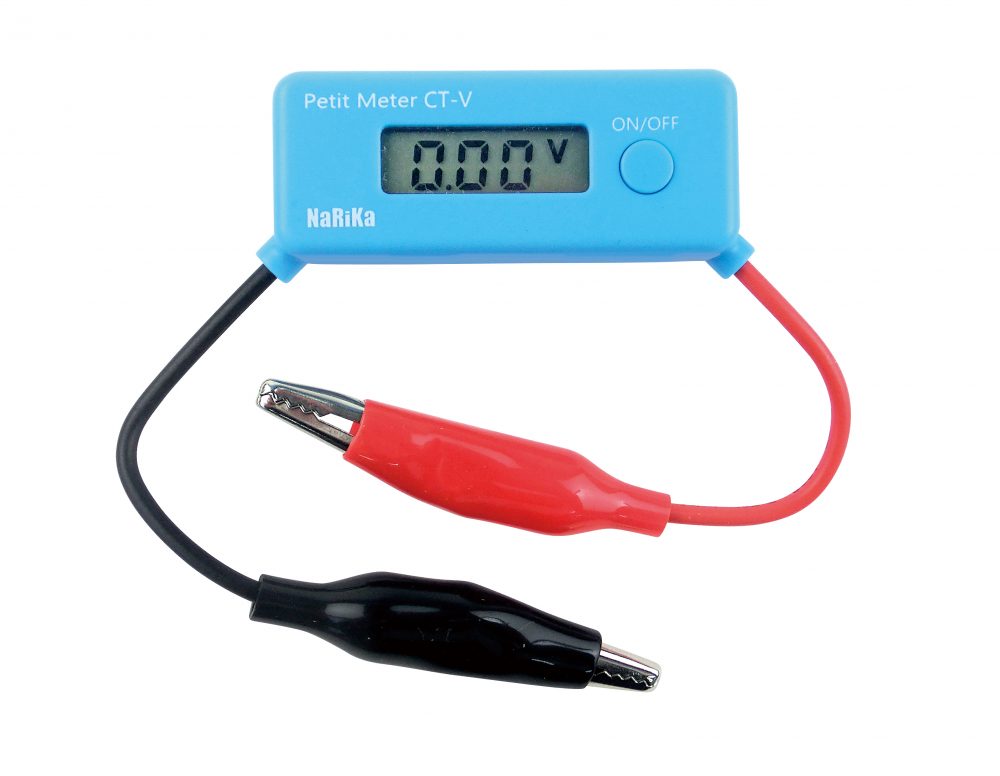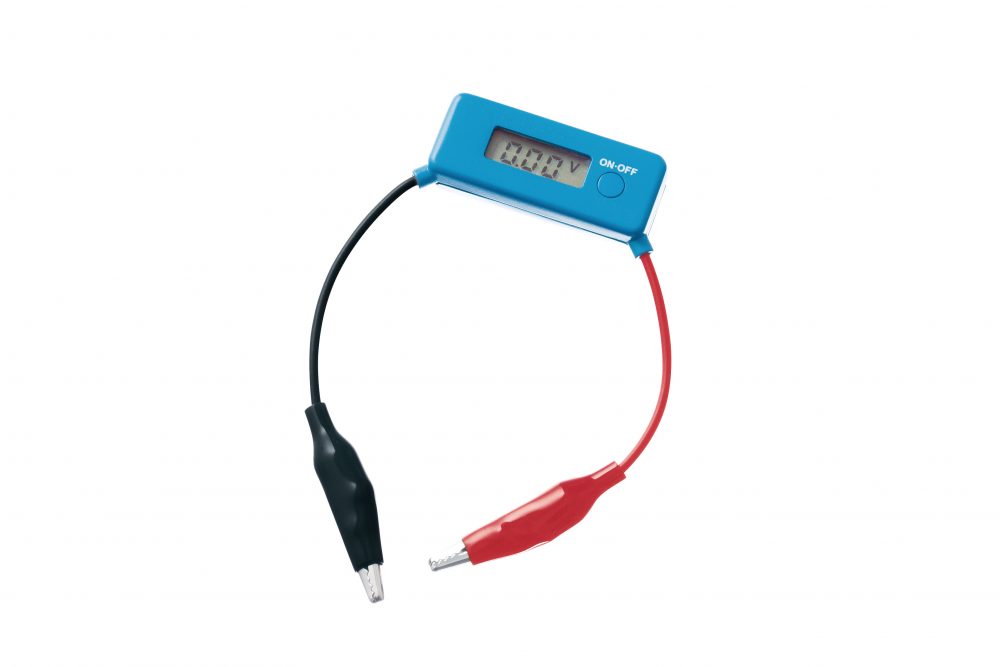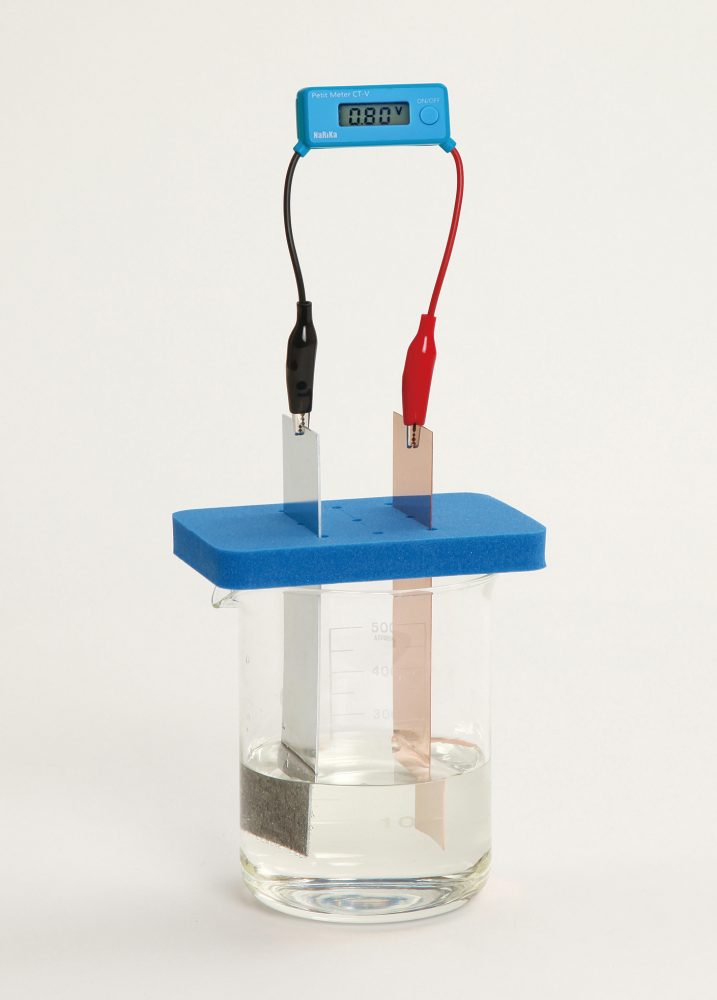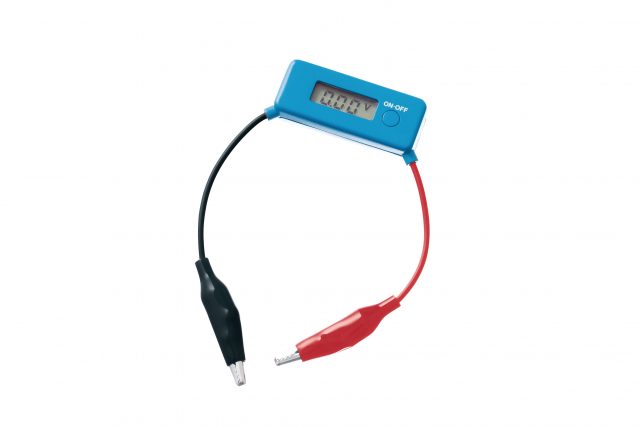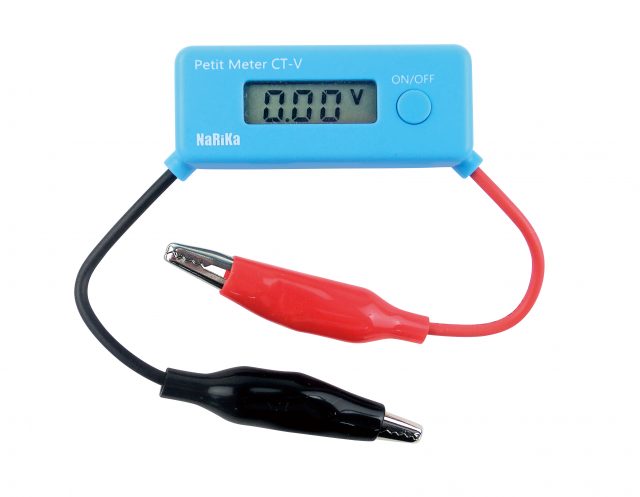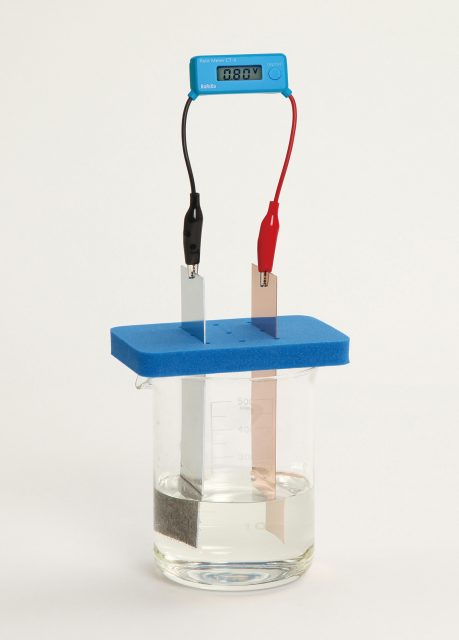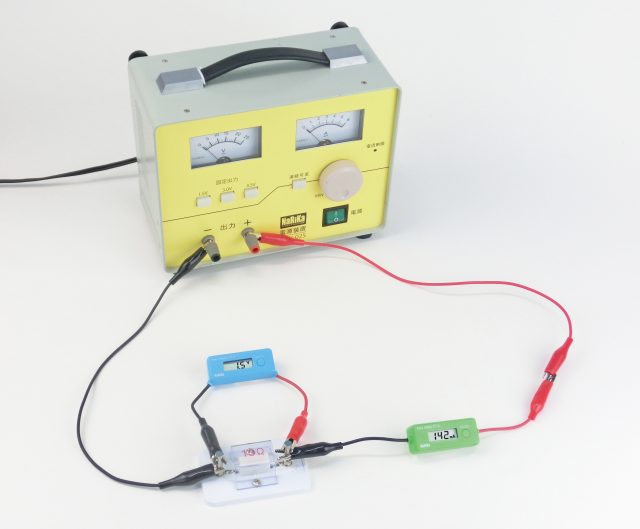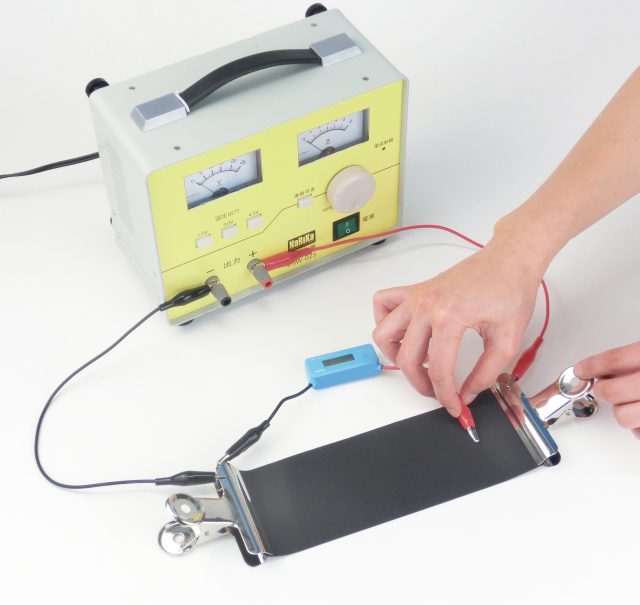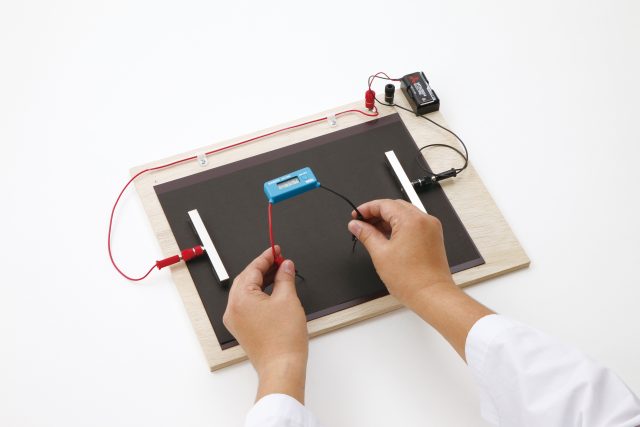Global Science Education
Electricity & Circuit
DC Voltmeter “CRABEE” CT-V
A05-7065
[Product Description]
In-line type Digital Miniature Voltmeter
[Overall Advantages to Users]
- Small and light enough to connect with any circuit.
- Two alligator clips are directly connected with the meter’s main body.
- Zero-point adjustment function that ensures more accuracy in experiment.
- Measured values are digitally displayed with plus or minus sign.
- One-push start-up allows quick measurement.
[Keywords]
- Electric Circuit
- Meter
- Miniature and digital equipment
Click the “Download tab” below for the “Teacher’s Resources” documents such as an instruction manual and teachers’ guide(s) for experiments.
Benefit
Specifications
Related Products
MOVIE
Download
[To all users]
- Reconnecting cables between terminals of meter is no longer needed unlike traditional analog meters.
- Unlikely to be damaged from wrong connection.
- Avoid any human error that may occur when selecting measurement range.
- Allows trial and errors freely in making various types of electric circuits.
[To teachers]
- Battery change is automatically noticed on the display, so battery exhaustion before/during experiment became avoidable.
- Automatic power-off function minimizing consumption of battery power.
- Overload protection function.
[To students]
- Better illustrate the similarity in the image of the meters written in circuit diagrams contained in textbooks.
- Easily connect with electric circuit in accordance with the circuit diagrams thanks to the in-line type shape of the product.
- No longer required to spend time for the troublesome measurement range selection as happens with multi-meters.
- Easy to notice that an voltmeter displays results with plus (+) and minus (-) signs reaffirming the direction of electric current that flows in the circuit.
- With two built-in cables extended from the corners on the meter’s main body, the shape of the meter better illustrates the image of detecting voltage values at any two points in a circuit.
- Measurement range: ±25V
- Automatically switchable display: 0.01V (0~±5.00V), 0.1V (±5.1V~±25.0V)
- Size (body): 53 × 21 × 15mm, Whole length: ca 280mm
- Battery: CR1220 x 1pcs
Teacher's Resources
-
[PROMOTION MATERIAL] Product insight
-
[EXPERIMENTS 20210105] Resistance in a parallel Circuit: As for the learning outcomes, learners will recognize 1) the whole electric current flowing in a parallel circuit is equal to the sum of electric current flowing through each component (branch), and 2) voltage value across a component of each branch of the parallel circuit is equal to each other. Consequently, learners will understand this through their experiments.
-
[EXPERIMENTS] Resistance in a Series Circuit: As for the learning outcomes, learners will recognize 1) the amount of electric current flowing in any position of a series circuit is consistent, and 2) the whole potential difference in a series circuit is equal to the sum of potential difference across each component in the circuit. Consequently, learners will understand that the whole resistance value in a series circuit is equal to the sum of a resistance value of each component with the help of Ohm's law formula.
-
[EXPERIMENTS] Electric Circuit ~ Simple Circuit~: Learners will learn to assemble a simple electric circuit by combining a dry cell battery (power source), a miniature bulb (resistance) and a switch. Also, they will acquire the skill of measuring current and voltage using the digital miniature meters properly.
-
[EXPERIMENTS] Electric Circuit ~ Series Circuit~: Learners will learn to assemble a series electric circuit by combining a dry cell battery (power source), a miniature incandescent bulb (resistance), and a switch. They will also acquire the skill of measuring current and voltage using the digital miniature meters properly.
-
[EXPERIMENTS] Electric Circuit ~ Parallel Circuits~: Learners will learn to assemble a parallel electric circuit by combining a dry cell battery (power source), a miniature incandescent bulb (resistance), and a switch. They will also acquire the skill of measuring current and voltage using the digital miniature meters properly.
-
[EXPERIMENTS] Ohm’s Law Experiments: It is the purpose of this experiment guide to help learners study Ohm’s law through their experiments. As of the learning outcomes, they will induce the Ohm’s law out by themselves through the experiments in which they draw graphs of the relationship between voltage, current, and resistance.
-
[MANUAL] In English for this product.
Download Product Photos

